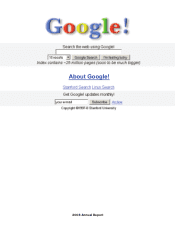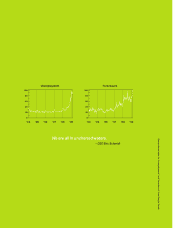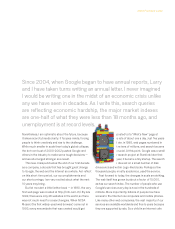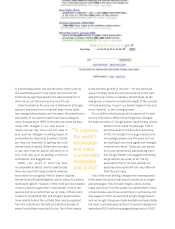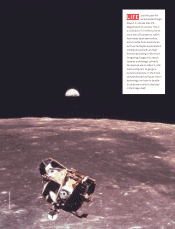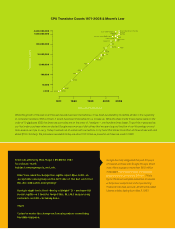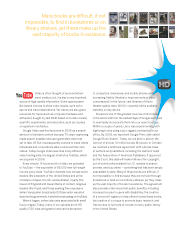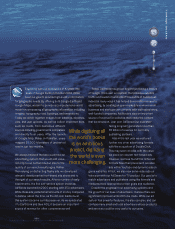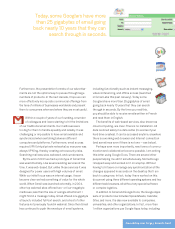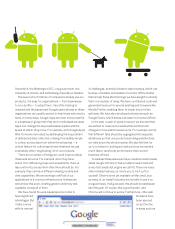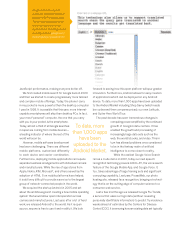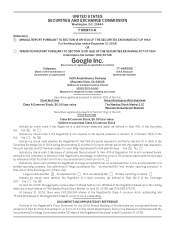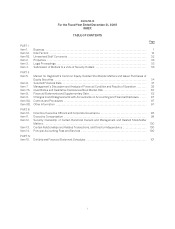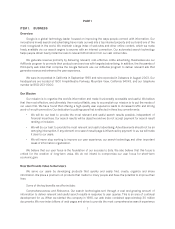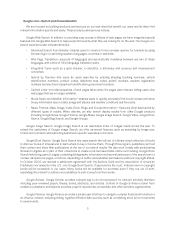Google 2008 Annual Report Download - page 11
Download and view the complete annual report
Please find page 11 of the 2008 Google annual report below. You can navigate through the pages in the report by either clicking on the pages listed below, or by using the keyword search tool below to find specific information within the annual report.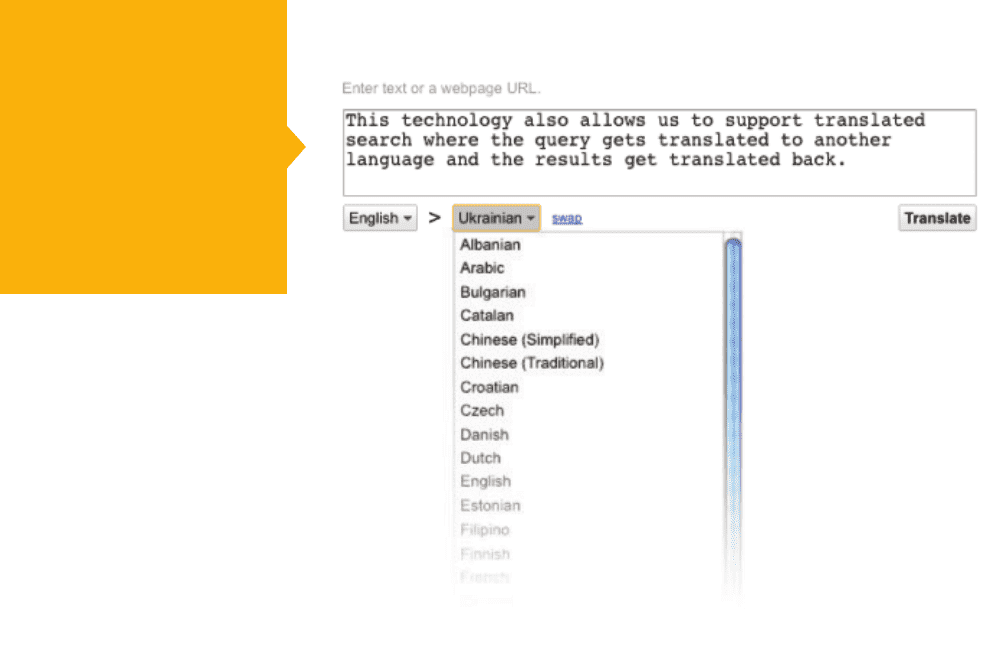
JavaScript performance, making everyone better o .
We fi rst created mobile search for Google back in 2000
and then we started to create progressively more tailored
and complex mobile o erings. Today, the phone I carry
in my pocket is more powerful than the desktop computer
I used in 1998. It is possible that this year, more Internet-
capable smartphones will ship than desktop PCs. In fact,
your most “personal” computer, the one that you carry
with you in your pocket, is the smartphone.
Today, almost a third of all Google searches
in Japan are coming from mobile devices —
a leading indicator of where the rest of the
world will soon be.
However, mobile software development
has been challenging. There are di erent
mobile platforms, customized di erently
to each device and carrier combination.
Furthermore, deploying mobile applications can require
separate business arrangements with individual carriers
and manufacturers. While the rise of app stores from
Apple, Nokia, RIM, Microsoft, and others as well as the
adoption of HTML 5 on mobile platforms have helped,
it is still very di cult to provide a service to the largest
group of network-connected people in the world.
We acquired the startup Android in 2005 and set
about the ambitious goal of creating a new mobile operating
system that would allow open interoperation across
carriers and manufacturers. Last year, after a lot of hard
work, we released Android to the world. As it is open
source, anyone is free to use it and modify it. We look
forward to seeing how this open platform will spur greater
innovation. Furthermore, Android allows for easy creation
of applications which can be deployed on any Android
device. To date, more than 1,000 apps have been uploaded
to the Android Market including Shop Savvy (which reads
bar codes and then compares prices), our own Latitude,
and Guitar Hero World Tour.
The past decade has seen tremendous changes in
computing power amplifi ed by the continued
growth of Google’s data centers. It has
enabled the growth and processing of
increasingly large data sets such as the
web, the world’s books, and video. This in
turn has allowed problems once considered
to be in the fantasy realm of artifi cial
intelligence to come closer to reality.
While the earliest Google Voice Search
ran as a crude demo in 2001, today our own speech
recognition technology powers GOOG-411, the voice search
feature of the Google Mobile App, and Google Voice. It,
too, takes advantage of large training sets and signifi cant
computing capability. Last year, PicasaWeb, our photo
hosting site, released face recognition, bringing a technol-
ogy that is on the cutting edge of computer science to a
consumer web service.
Just a few months ago we released Google Flu Trends,
a service that uses our logs data (without revealing
personally identifi able information) to predict fl u incidence
weeks ahead of estimates by the Centers for Disease
Control (CDC). It is amazing how an existing data set typically
To date, more
than 1,000 apps
have been
uploaded to the
Android Market.
Google Translate supports
automatic machine translation
between 1,640 language pairs.
This is made possible by large
computer clusters and vast
repositories of monolingual and
multilingual texts: google.com/
intl/en/help/faq_translation.html.

